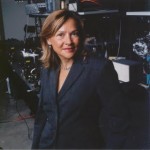How To Rid The Developing World Of Deadly Bacteria? Steam | Source: FastCo.Exist, Aug 9, 2013 |
By making water boil at much lower temperatures, scientists are using steam generated by the sun as a way sanitize things in places where unclean conditions often lead to disease and death
Up to 2.5 billion people lack access to proper sanitation. They use “flying toilets” to dispose of excrement, do without bathrooms for hand-washing, and play roulette with unclean medical and dental equipment. We’ve discussed a lot of toilet solutions here, including this one and this one. But waste collection is only half the battle: you still need a way to deal with the material after the fact–a way of killing bacteria before it leeches into the water supply, and spreads disease. Another 2.1 billion people use sanitation systems that don’t dispose of waste safely.
Researchers at Rice University have been working on what could be a wide-ranging remedy: solar steam. By developing an efficient way of creating steam from sunlight, they hope to distribute cleansing technology more widely, particularly to places beyond the electricity grid. The key is special heat-absorbing nano-particles that they place in water. When the sun shines, the particles take in up to 90% of the sun’s energy, producing steam that can be piped off and used in different ways. The system, which has overall efficiency of about 24%, is far more efficient that solar panels, which convert only about 15% of energy when they generate electricity.
Having demonstrated the process in the lab, Naomi Halas and her colleagues have since built solar collector prototypes using a grant from the Bill & Melinda Gates Foundation. They now plan to trial those at three sites in Kenya, together with a local startup called Sanivation. The eventual aim is to create a module that any family or village can use safely–though that might still be a few years away.
The method is so effective that it even produces steam when the water is full of ice, as you can see in the video. The steam is fed off to an autoclave that has a temperature of about 300 degrees Fahrenheit–which is easily hot enough to neutralize waste, or sterilize equipment. It’s a good reminder that electricity isn’t the only way of harnessing natural energy. While off-grid villages need electrification, it should be possible to deliver some basic services without it.



